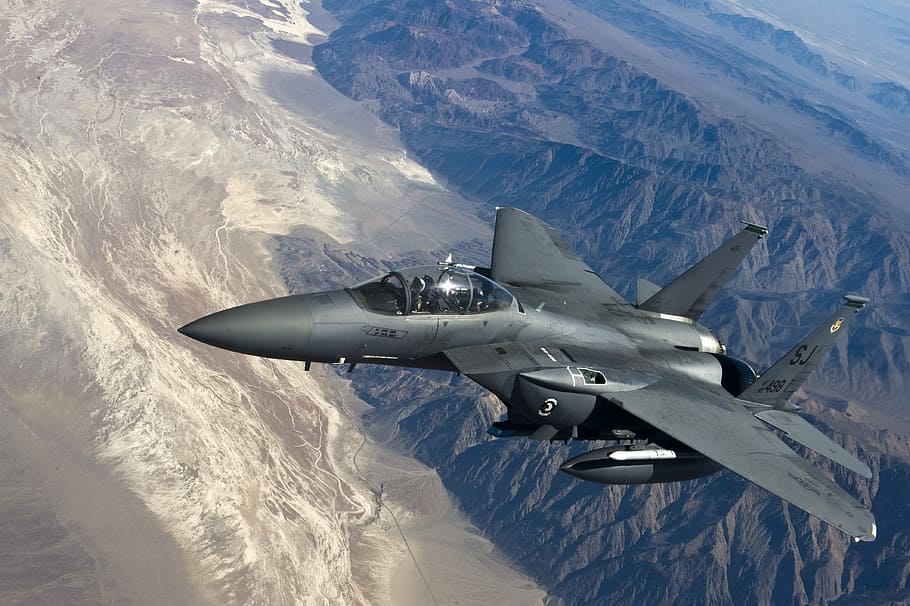
In late April, Boeing handed over the first F-15EX Eagle II aircraft from its second production lot to the U.S. Air Force. This modernized fighter, assembled in St. Louis, Missouri, and designated EX-09, represents a key advancement in efforts to upgrade the Air Force’s aging combat fleet. At the same time, a proposed $3.1 billion funding package from Congress aims to accelerate production, reflecting a broader strategy to retain air superiority.
Poland, a frontline NATO member actively strengthening its defense posture along Europe’s eastern boundary, has shown keen interest in acquiring the F-15EX. The potential alignment between expanded U.S. production and Poland’s military modernization goals marks a significant moment in NATO’s evolving airpower landscape.
According to Boeing Defense, the EX-09 made its first flight in March and is one of 12 aircraft slated for delivery in the second production round by year-end. Boeing has already delivered eight jets from the initial batch—six are undergoing testing at Eglin Air Force Base, Florida, while two have been assigned to the 142nd Wing of the Oregon Air National Guard. The Air Force’s acquisition plan includes at least 104 F-15EX aircraft to replace its aging F-15C/D fleet, potentially rising to 122 or more with congressional support.
The $3.1 billion, part of a broader $150 billion defense appropriation, could fund an additional 32 to 34 jets, given an estimated unit cost of $90–95 million. This investment highlights growing concern over the diminishing number of combat aircraft as global threats multiply.
For Poland, the F-15EX could be a game-changer in regional defense. The aircraft is derived from the F-15 Eagle platform but incorporates modern systems for both air-to-air and air-to-ground operations. Twin GE F110-GE-129 engines provide speeds up to Mach 2.5, and the aircraft boasts a combat range of approximately 800 miles without aerial refueling.
The F-15EX features a reinforced frame with a 20,000-hour life expectancy, enabling long-term deployment. Its open mission systems architecture allows swift integration of evolving technology, sensors, and armaments. A large-format cockpit display improves pilot and crew situational awareness.
Notably, the F-15EX can carry a maximum payload of 29,500 pounds across 11 hardpoints—more than any other fighter in its class. It supports a wide variety of precision and air-to-air munitions, including the AIM-120D-3 AMRAAM, AIM-9 Sidewinder, AGM-158 JASSM, and GBU-39 Small Diameter Bombs. With the AMBER rack system, it could potentially carry up to 22 air-to-air missiles—an exceptional capability for a fourth-generation aircraft.
Its advanced avionics package includes the Raytheon AN/APG-82(V)1 AESA radar, enabling precise tracking in contested environments, and the BAE Systems AN/ALQ-250 EPAWSS for superior electronic warfare capabilities. The Lockheed Martin Legion Pod further augments its detection range through a passive infrared search and track system.
While the F-15EX lacks stealth, it offers unmatched speed, endurance, and firepower. It is designed to complement fifth-generation platforms like the F-35 and F-22, providing a robust and adaptable solution for countries such as Poland.
Poland’s interest in the jet, highlighted at the MSPO defense expo in September 2023, coincides with its ramped-up defense spending—over 4% of GDP. Already operating 48 F-16C/Ds and awaiting delivery of 32 F-35A jets beginning in 2026, Poland sees the F-15EX as a potential asset for air superiority and deep-strike missions.
Its compatibility with weapons already fielded by Poland’s F-16 fleet, such as the AIM-120D and JASSM, would streamline integration and logistics. Boeing’s emphasis on modular systems also makes it easier to adopt European missiles like the MBDA Meteor in the future.
The F-15EX benefits from a strong combat pedigree. The original F-15 Eagle has a flawless aerial combat record since entering service in 1976. The Eagle II builds on this legacy, leveraging enhancements from export variants like the F-15SA and F-15QA. During the Northern Edge 2021 exercise, it proved effective even against stealth aircraft.
This capability is particularly important for Poland, given potential threats from Russian platforms like the Su-35 and Su-57. The F-15EX’s future integration with hypersonic weapons like the AGM-183 ARRW may further boost deterrence, though those systems are still in development.
Boeing is also exploring industrial partnerships with Polish firms. At MSPO 2023, the company highlighted opportunities for Polish companies to support production, maintenance, and component supply—aligning with Poland’s desire to strengthen its defense industry and reduce dependence on foreign support.
Cost-effectiveness is a key consideration. Boeing claims the F-15EX has a lifecycle cost roughly 50% lower than the F-35, although Poland will need to invest heavily in training and infrastructure to support a mixed fleet. Building local capacity could bring long-term economic benefits, similar to the projected $850 million impact at Selfridge Air National Guard Base in Michigan, where 21 F-15EX aircraft will replace A-10s.
The U.S. production ramp-up, facilitated by the $3.1 billion proposal, aims to increase monthly output to two aircraft by late 2026. This could reduce wait times for Poland and other interested nations like Israel and Indonesia. Israel received approval for 50 F-15IA jets in 2024, while Indonesia signed an agreement for 24 F-15IDNs in 2023.
However, the funding proposal still requires approval from Congress and the president. Supporters argue that enhanced production is necessary to counter advanced systems from adversaries like China’s J-20 and Russia’s S-400, which pose growing threats along NATO’s eastern border.
Poland’s security concerns have intensified since Russia’s invasion of Ukraine. The F-15EX’s ability to operate in contested airspace—backed by its electronic warfare suite and AESA radar—makes it suitable for missions such as enforcing airspace or striking targets in hostile territories like Kaliningrad.
Although Russia’s Su-35 features strong radar and long-range missiles, the F-15EX offers greater firepower and electronic capabilities. Against stealthy platforms like the J-20, it relies on standoff munitions like the JASSM-ER to maintain effectiveness.
The jet’s role within NATO could be transformative. Its seamless integration with allied systems, including the F-35, enables cohesive joint operations. During exercises like Red Flag, the F-15EX has acted as a command-and-control hub, coordinating with unmanned systems such as Collaborative Combat Aircraft.
The deployment of 36 F-15EXs to Kadena Air Base in Japan by 2026 offers a strategic model for how Poland might use the jet for regional power projection.
Boeing’s facility in St. Louis has expanded its workforce to meet growing demand, but production has faced delays due to supply chain issues and manufacturing inefficiencies. The company’s internal reforms have improved performance, yet delivery schedules remain a critical concern for foreign buyers like Poland.
Despite its $94 million flyaway cost—slightly higher than the F-35A—the F-15EX offers greater mission readiness, with an 83% mission-capable rate versus the F-35’s 67%, as per the U.S. Government Accountability Office.
For Poland, the decision hinges on balancing cost, capability, and long-term sustainability. While the F-35 excels in stealth and penetration roles, the F-15EX provides unparalleled payload and adaptability, including the ability to field hypersonic weapons in the future.
With the possibility of industrial cooperation and operational advantages, the F-15EX presents a compelling option. However, Poland’s ability to manage a diverse fleet of advanced aircraft will depend on its readiness to invest in supporting infrastructure and training.
As Boeing’s F-15EX becomes a centerpiece of modern air strategy, its adoption by Poland could strengthen ties with the U.S. and enhance NATO’s deterrence posture. Yet, uncertainties over funding and defense priorities remain. Whether Poland chooses to move forward with the Eagle II could influence the balance of power in Eastern Europe for years to come.




